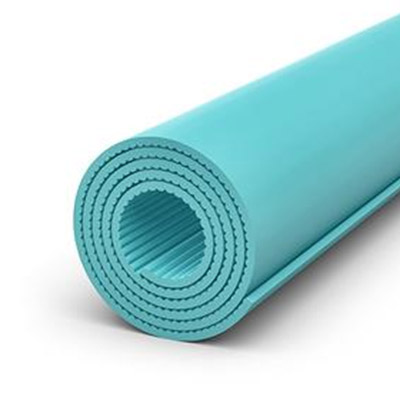
-
 Afrikaans
Afrikaans -
 Arabic
Arabic -
 Belarusian
Belarusian -
 Bengali
Bengali -
 Bulgarian
Bulgarian -
 Croatian
Croatian -
 Czech
Czech -
 Danish
Danish -
 Dutch
Dutch -
 English
English -
 Finnish
Finnish -
 French
French -
 German
German -
 Greek
Greek -
 hawaiian
hawaiian -
 Hebrew
Hebrew -
 Hindi
Hindi -
 Hungarian
Hungarian -
 Indonesian
Indonesian -
 irish
irish -
 Italian
Italian -
 Japanese
Japanese -
 Javanese
Javanese -
 kazakh
kazakh -
 Khmer
Khmer -
 Korean
Korean -
 Kyrgyz
Kyrgyz -
 Lao
Lao -
 Latin
Latin -
 Luxembourgish
Luxembourgish -
 Malay
Malay -
 Myanmar
Myanmar -
 Norwegian
Norwegian -
 Persian
Persian -
 Polish
Polish -
 Portuguese
Portuguese -
 Romanian
Romanian -
 Russian
Russian -
 Serbian
Serbian -
 Slovak
Slovak -
 Somali
Somali -
 Spanish
Spanish -
 Swedish
Swedish -
 Tagalog
Tagalog -
 Thai
Thai -
 Turkish
Turkish -
 Turkmen
Turkmen -
 Ukrainian
Ukrainian -
 Uighur
Uighur -
 Vietnamese
Vietnamese
Dec . 11, 2024 11:05 Back to list
Selecting the Perfect Size for Your Mountain Bike Adventure
Choosing the Right Size Mountain Bike A Comprehensive Guide
Mountain biking is an exhilarating outdoor activity that offers immense joy and a sense of adventure. However, the thrill of navigating through rugged terrains and scenic trails can quickly turn into a nightmare if you are riding a poorly fitted bike. Choosing the right size mountain bike is critical for comfort, performance, and safety. In this guide, we will explore the key factors to consider when selecting the appropriate size for your mountain bike.
Understanding Bike Sizes
Mountain bikes come in various sizes, typically categorized into small, medium, large, and extra-large. The size you need will depend largely on your height and inseam measurement. Most manufacturers also provide size charts, but understanding how they translate to your body measurements is crucial.
1. Height Measurement Your overall height is the most straightforward way to determine your mountain bike size. Generally, a rider’s height correlates with specific frame sizes. For example, a rider between 5'1 and 5'6 might fit into a small bike, while someone measuring 5'7 to 6'0 might opt for a medium.
2. Inseam Measurement The inseam measurement, which is the distance from your groin to the ground, provides additional insight into bike sizing. To find the right bike size, subtract 10 to 12 inches from your inseam measurement. This figure will give you the appropriate standover height, ensuring you can confidently mount and dismount the bike.
Frame Geometry
Mountain bike frames come in various geometries, which can impact how the bike fits and feels. Key elements of frame geometry include reach, stack, and standover height.
- Reach This measurement indicates how far you have to stretch to reach the handlebars. A longer reach may provide more stability on descents but can lead to discomfort on long climbs if it’s too elongated for your torso length.
- Stack The stack is the vertical distance between the bottom bracket and the top of the head tube. Bikes with higher stacks allow for a more upright riding position, enhancing comfort and visibility.
- Standover Height Ensuring that you can easily straddle your bike is fundamental for safety and comfort. When standing over the bike, there should be at least 1-2 inches of clearance between the top tube and your body.
Test Ride Before You Buy
choosing the right size mountain bike

While size charts and measurements provide a good starting point, nothing replaces the experience of a test ride. Riding multiple bikes will help you understand what feels best for your body. Here are some key aspects to evaluate during your test ride
- Comfort Pay attention to how the bike feels. You should be able to reach the handlebars without overstretching, and your knees should not hit the handlebars during pedaling.
- Control Evaluate how the bike handles on various terrains. You should feel in control; if the bike feels twitchy or unwieldy, it may be the wrong size or geometry for you.
- Adjustment Don’t hesitate to adjust the saddle height and angle during your test ride. A well-adjusted saddle can significantly impact how the bike performs.
Additional Considerations
When choosing the right size mountain bike, it’s also crucial to consider the type of riding you plan to do. Different riding styles, such as cross-country, trail riding, or downhill, may necessitate different bike designs and sizes.
- Cross-Country Bikes Typically lightweight and efficiency-focused, these bikes often feature a less aggressive geometry, which can suit riders who prefer a longer reach.
- Trail and Enduro Bikes With slacker geometries for more stability on descents, these bikes might accommodate riders who lean towards a more aggressive riding style, affecting size choice as well.
- Downhill Bikes Generally, these are designed for maximum control and stability at high speeds, which may also influence the frame size and geometry needed.
Conclusion
Choosing the right size mountain bike is not just about numbers; it's about finding a perfect fit for your body, riding style, and the type of terrain you intend to tackle. By considering your height and inseam measurements, understanding frame geometry, and taking the time to test ride multiple options, you'll be well on your way to finding the bike that enhances your mountain biking experience. Remember, a properly fitted bike not only improves your riding performance but also ensures your safety and enjoyment on the trails. Happy biking!
-
New Red Anti-theft E-Bike | Easy Ride City Commuter
NewsJul.31,2025
-
BMX 20 Inch Bikes for Freestyle & Street | Fat Tire Options Available
NewsJul.30,2025
-
322 High Quality 26 Inch 21 Speed Adult Mountain Bike OEM MTB
NewsJul.29,2025
-
Specialized Kids Mountain Bikes - Safe, Durable & Fun Riding Experience
NewsJul.29,2025
-
Little Kids Mountain Bike - Lightweight Bikes for Young Riders
NewsJul.29,2025
-
Kids Mountain Bike Trek – Full Suspension for 6 Year Old Riders
NewsJul.29,2025

